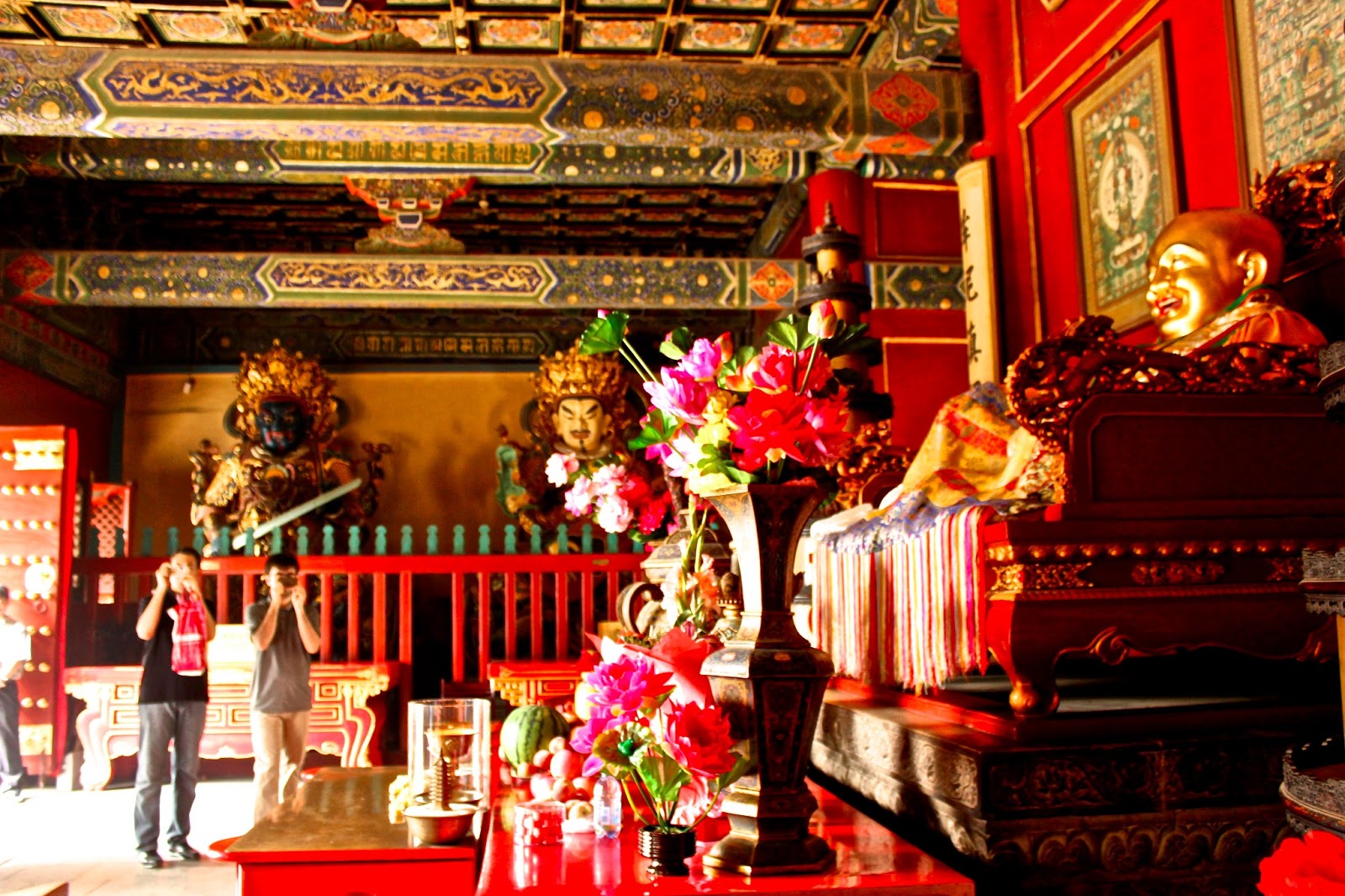Hello.
Yesterday we went to the Summer Palace, North of the center of Beijing. Emperor Qian Long built this palace for his mother. She had a very long life which ended 80 years after her birth, and so there are many tributes to longevity found in this palace. She also loved to travel, so the Emperor ordered that this palace be built to imitate different scenic parts of China, similar to Las Vegas, if that analogy can be made.
The first thing one sees upon entering the palace is a canal and a bridge. The canal is lined by buildings with shops. This is a reconstruction of a real street from the city Suzhou of the Jiangsu province. This is often called the Venice of Italy, so I think it is appropriate to name the bridge the Rialto Bridge.
The "sidewalks" are literally sidewalks, only one meter wide (at most) with no railing separating the pedestrians from the water. One our adventurous walk, we came across a snack shop that sold Chinese yogurt.
It was very good. It was liquid enough to drink with a straw and was serves in white ceramic jars. The tops were covered by a piece of paper secured by a rubber band. We pierced the paper with the straw and enjoyed the yogurt. It tasted a lot like sweet buttermilk. After finishing, we returned the ceramic jars to be refilled and covered with new paper tops. Later, I noticed many more food vendors selling this delicious yogurt.
The shop was at most 6 square meters, but the owner nevertheless invited us to sit inside to enjoy the yogurt (and probably also to return the jars to her). Inside was a traditional old-fashioned Chinese restaurant menu:
There seems to be a resemblance.
The idyllic Chinese pastoral scene consists of a body of water and a hill or mountain beside it. Therefore, this canal was created artificially to provide the body of water, and the land removed in its creation was used to provide the mountain beside it.
And it was quite a little mountain. We climbed the other side of this mountain to reach the top of yet another Buddha temple and saw that this little palace was actually its own little world. This side looked out onto a lake which connected to the Venice-like canal. There were many boats one this lake. The view was spectacular. The lake is called Kunming Lake and resembles the lake of Kunming town in another province of China.
The shore of this lake on the side of the mountain is lined by a very long corridor which was burned down during the Opium Wars by the Anglo-French Alliance and rebuilt later in the 1800's.
The corridor.
Some locals.
The Buddha temple that we climbed to.
During the climb. I no longer look like a newly-minted tourist, right?
The view from the top.
Back by the lake.
In the middle of the lake, Opposite the hill with the temple as a man-made island with a 17-ach bridge connecting a promenade to it. This bridge was featured in the National Geographic recently, I believe.
The Bridge.
The temple seen from the island.
On the island.
We took a boat back from the island to the hill and exhausted, returned home to a beautiful view from Cece's apartment.
The boat.
The view: sometimes smog can help make very nice sunset photos.
And dinner that Cece's parents cooked. The potatoes in the back are cooked in vinegar and are a very traditional country dish. They are delicious.
These are my favorite dessert from China so far: red-bean-stuffed pastry. Mmmmm
Cheers,
Nina.
Nina.
























































